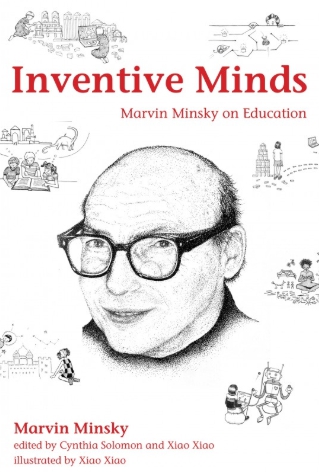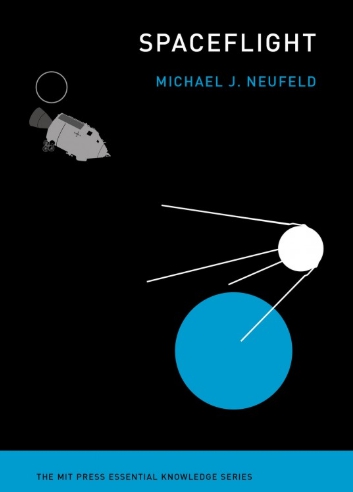A selection of books from the Massachusetts Institute of Technology

While the month of May passes outside the window, flowers begin to bloom, hormones play and seasonal diseases worsen, scientific work is being conducted quietly and peacefully in leading Western institutes and many interesting books are being published. Here you can find practical manuals, professional forecasts, processed results of recent studies. And this is not dry academic literature, but fascinating works that are designed for a wide audience. From simple to complex, banal things reveal complex topics. Since Habr with MIT have not yet met each other and love has not broken out between them at first sight, here is a selection of 14 books from various fields: from cybersecurity and AI to space exploration. The entire list is available here .
Josephine Wolff. You'll see this message when it is too late: The Legal and Economic Aftermath of Cybersecurity Breache

News about incidents in information security is received regularly. Every major case: the theft of data from 145.5 million clients of Equifax credit bureau, NSA documents or the US government, data leakage Sony Pictures - appears in the news, causes panic, lawsuits, and then is forgotten. The alternation of hysteria and amnesia continues with the next attack. In this book, cybersecurity expert Josephine Wolf states that we should not forget about incidents, but investigate the whole cycle: from causes to compensation for harm and the cost of future security measures. So we can learn from them valuable experience.
Wolf describes a series of significant IS incidents from 2005 to 2015, the life cycle of each violation, and identifies opportunities for protection. She offers three motives for these attacks: financial gain, espionage and public humiliation of victims - analyze the appearance of various types of attacks and give examples of each of them. The 2006 leak in TJX became the template for a series of payment card fraud cases. Chinese hackers ran a series of attacks on US companies from 2006 to 2014 and sparked controversy about the difference between economic and political espionage, and the theft of Ashley Madison's customer base in 2014 was aimed at reputation, not money.
Jeremy Kepner, Hayden Jananthan. Mathematics of Big Data: Spreadsheets, Databases, Matrices, and Graphs.

In areas such as Internet search, healthcare, finance, social networks, wireless devices and cybersecurity, the volume and variety of data is growing every day. Moreover, they grow at a rate exceeding our ability to analyze them. Tools such as spreadsheets, databases, matrices and graphs reflect the need to store and use data as whole sets, and not as separate elements. This book presents the general mathematical foundations used in many applications and technologies. Associative arrays combine and simplify data, allowing you to see the differences between different tools and use their mathematical similarity to solve the most complex problems with big data.
Initially, the concept of an associative array is introduced in a practical sense, it is a D4M (Dynamic Distributed Dimensional Data Model) system and describes the use of associative arrays for graph analysis and machine learning. It provides a mathematically rigorous definition of associative arrays and describes their properties that arise from this definition. Finally, the book shows how the concepts of linearity can be expanded to cover associative arrays. The book can be used as a textbook or reference book for engineers, scientists, mathematicians, programmers who work with big data.
Thomas H. Davenport. The AI Advantage: How to Put the Artificial Intelligence Revolution to Work

Thomas Davenport provides guidance on using cognitive technology in business and describes how companies can use it. He talks about unnecessary noise around AI, high expectations from him and recommends not to go on a “flight to the moon” (treating cancer or combining all investment knowledge), but look for “low hanging fruit” to make your company more efficient.
Davenport explains that the business value of AI is in concrete results. AI will improve products and processes, effectively make decisions in important background tasks. AI technologies do not replace people, but expand opportunities: smart machines must work together with smart people. AI can automate structured and repetitive work, provide extensive data analysis through machine learning, and interact with customers and employees through chatbots and intelligent agents.
Davenport describes the basic AI technologies, how they are used, gives examples of the use of AI in the work of large companies such as Amazon and Google, and suggests strategies and steps for creating a cognitive corporation.
Terrence J. Sejnowski. The deep learning revolution

The revolution in deep learning improved automatic translators, brought us unmanned vehicles, conversations with Siri and Alexa, as well as huge profits from automated trading on the New York Stock Exchange. Deep learning networks can play poker better than professional poker players and defeat the world champion in Go. In this book, the author explains how deep learning has evolved from a hidden academic direction to technology that has revolutionized the information economy.
Seinowski was one of those who, in the 1980s, challenged the existing version of AI based on logical and symbolic approaches. The new version of AI, which has become deep learning, learns from the data in the same way that children experience the world. Learning algorithms extract information from raw data, information is used to create knowledge, knowledge is the basis of understanding, understanding leads to wisdom. Someday, an autopilot will drive better than a person, a deep learning network will diagnose diseases, and a personal assistant will complement your imperfect intellect. It took millions of years to develop the human mind; AI can achieve this in decades.
David D. Clark. Designing an internet

How was the internet designed? How could it look if it was designed today from scratch? In this book, the author explains how the Internet was created, what requirements it had to satisfy, and why different design decisions create different networks. Analyzing the current state of affairs and alternative proposals on the structure of the Internet, the author draws general conclusions about the network architecture.
Clark talks about the history of the Internet and how conflicting demands on longevity, security, accessibility, and economic viability shape its character. He considers both the technical aspects of the Internet and the social and economic role, describes the key requirements that a successful project must meet, and then presents how to create the future Internet from scratch. But the point is not that someone can do this, but that by thinking of a better future, we can bring it closer.
Nazli Choucri, David D. Clark. Cyberspace and International Relations: The Co-Evolution Dilemma.
In our digital world, data streams define the international landscape. How does the Internet shape international relations and how do international relations influence it? The authors offer an analysis of the joint evolution of cyberspace and international relations, examining the problems that arise in individuals, organizations and states.
The authors examine the spread of power and politics in the digital sphere and argue that the Internet is developing much faster than tools to regulate it. This creates a new reality in which digital interactions have allowed weaker actors to influence or threaten strong players, including traditional state powers. The authors develop a new method for resolving conflicts in the era of the Internet and apply it to various situations and the main players: USA,
Robert W. Gehl. Weaving the Dark Web: Legitimacy on Freenet, Tor, and I2P

The term “Dark Web” conjures up the market for drugs, unregulated sales of weapons, and stolen credit cards. But Robert Gel argues that there are others for each of these illegal uses: the anonymous New York Times information collection system or the use of encryption by political dissidents. The author defines Dark Web as a collection of websites that can be accessed only through special routing software. He divides its use into “legitimate” and “criminal”, uses the concept of legality as a window on the Dark Web and describes the history of three systems: Freenet, Tor and I2P.
The book describes three types of rights: the legitimate power or state monopoly on violence, the right to private property and the inviolability of correspondence. He explores how Freenet, Tor, and I2P come across these concepts, and then describes each type in detail, exploring markets, search engines, and social networks on the Dark Web. It proves the value of anonymous political speech during ubiquitous observation. He claims that by destroying the Dark Web, we will lose a valuable channel for dissent.
Adam Barr. The Problem With Software: Why Smart Engineers Write Bad Code

Why are there so many bugs and holes for viruses in the software? Why are software products so often delayed and canceled? Is it really that difficult to develop software, or is it a problem with the qualifications of programmers? In this book, Adam Barr examines the distribution of poor software, explains the reasons for this phenomenon, and suggests how to improve the situation.
Higher education does not give programmers what they really need to know: how to work in a team and write code that works reliably and can be supported by someone other than the original authors. With the growth and complexity of commercial software, the gap between academic computer science and industry has widened. Barr, who has worked at Microsoft for more than twenty years, describes the development of the industry, from the era of mainframes and Fortran to today's cloud technology.
He explains the causes and number of errors, vulnerability to malware. The author gives examples where good and bad software are distinguished by one line of code, and the consequences of a seemingly inconsequential choice. Barr writes that the most promising area of software development is the transition to the cloud. When software is a service, not a product, companies will have more incentive to make it good, rather than "suitable for delivery."
Tony Veale, Mike Cook. Twitterbots: Making Machines that Make Meaning

Twitter offers unique opportunities for creativity and interests of both people and machines. Bots, stand-alone software systems, send their messages to the twitter sphere, where they mix with tweets from real people. Your next subscriber may not be human at all. And you yourself can easily follow the news of the bot. This book examines the world of bots, their place in the social media landscape.
Tony Vale and Mike Cook are exploring not only Twitter's ability to create their own bots, but also the more complex scientific and engineering task of writing bots, which themselves create short witty and provocative tweets. The authors describe some of the most famous Twitter bots: from the idle big_ben_clock, which tweeted BONG every hour, and the delightful pentametron searching and folding tweets with the iambic pentameter, to the disaster of Microsoft @TayAndYou, who learned the theory of conspiracy, racism and radical politics. They explain how to use Twitter programming interfaces to create Java bots, but keep technical details to a minimum and focus on the creative activities of bots. Weil and Cook argue that each bot is a thought experiment with a digital form that embodies the hypothesis about the nature of creativity,
Cynthia Solomon, Xiao Xiao. Inventive Minds: Marvin Minsky on Education

Marvin Minsky was one of the first AI researchers, co-founder of the MIT Laboratory of Computer Science and Artificial Intelligence. The basis of his work was not only the desire for technological progress, but also the desire to understand the work of the human mind. His understanding gives new perspectives in the field of education. This book for the first time collects six Minsky essays on children, learning and the potential of computers at school.
In these articles, Minsky discusses the shortcomings of conventional education, especially in mathematics, and considers alternative approaches. He describes the role of mentors, describes high-level strategies for interdisciplinary thinking; and offers projects for activities with children. Each essay is complemented by a comment by one of Minsky's former colleagues or students, who identifies key ideas and links them to ongoing research. Minsky once remarked that in traditional training, "we focus on preventing errors." These essays collect Minsky's ideas on how education, on the contrary, can contribute to the development of inventiveness.
Robin R. Murphy. Robotics Through Science Fiction: Artificial Intelligence Explained Through Six Classic Robot Short Stories
This book presents six classic NF stories that illustrate and explain the key algorithms and principles of artificial intelligence. All stories were published before 1973, but they help readers understand two issues: how intelligent robots are programmed and what are the limits of their autonomy.
Each story is preceded by an introduction “when you read the story,” followed by a discussion “after you read the story.” Together with the comments, the stories offer a non-technical introduction to robotics. Stories can also be seen as a thought experiment that must be considered in conjunction with more serious research.
Contents: “Wanderer in Paradise”, “Round dance”, “How to Catch a Rabbit” Isaac Asimov, “Far Sight” Vernor Vinge, “Super Tears Enough for the Whole Summer” Brian Aldiss, “Second Model” Philip K. Dick.
Clifford V. Johnson. The Dialogues: Conversations about the Nature of the Universe

Physicist Clifford Johnson believes that we need to talk more about science. It should be on our daily menu along with a discussion of politics, books, sports or TV shows. Conversations about science should not be left to experts. In "Dialogues" Johnson offers us a series of nine conversations written in the form of a graphic novel "On the Nature of the Universe." Conversations take place all over the world, in museums, in trains, in restaurants, in what may or may not be Freud's favorite coffee shop. Interlocutors - men, women, children, experts and science lovers. The topics of conversation range from cooking to the multiverse to String Theory. The graphic form is especially convenient for physics, since one drawing can show something that requires a lot of words to explain.
In the first conversation, the couple meets at a costume party and talk about scientists with superpowers who use them not to fight crime, but to develop science. They discuss “beautiful equations,” the conversation flows into another chapter (“Wait, you haven't told me about the light yet”), and in the third chapter they finally exchange phones. Another couple meets on a train and discusses immortality, time, black holes and religion. Two women are sitting in the yard discussing multiversion, quantum gravity and the anthropic principle. After reading these dialogs, we can start our own.
Michael J. Neufeld. Spaceflight: A Concise History

Space flight is one of the greatest achievements of mankind of the twentieth century. In 1957, the USSR launched the first satellite, and after twelve years, American astronauts walked along the moon. This book outlines a brief history of space travel with a complete list of actions in space.
The author explains that the “space program” should not be equated only with human flight. Since the 1960s, unmanned military and commercial spacecraft have been revolving around the Earth, and space probes have sent stunning images of distant planets. Neufeld begins with the beginnings of ideas about space exploration and the discovery that rocketry can be used for space flight.
He discusses Soviet-American relations and recalls that NASA resisted the participation of female astronauts even after Valentina Tereshkova flew into space. It analyzes two justifications of the Apollo program: first of all, it was a matter of prestige and only then - a scientific project. Describes the internationalization and privatization of space travel after the end of the Cold War, the cultural influence of science fiction, including Star Trek and Star Wars, space tourism for the super-rich, and the popularization of space exploration.
Paolo Ruffino. Future Gaming: Creative Interventions in Video Game Culture

This book is not about the future of video games. This is not an attempt to predict the market or changes in the behavior of gamers, friendliness or aggression in the gaming environment, but an analysis of the forecasting methods themselves. Describes how to form and refute past, present and future opinions about the games of producers, journalists, gamers themselves, as well as how to look through them tomorrow.
Exploring the culture of games, from gamification in self-education to sexism and hatred in Gamergate, the author offers an alternative, creative way of reasoning about the gaming environment: a complex critical technique that blurs the boundaries between creation, study, and life with video games. Through a series of stories, the author makes us think about our role in the formation of the object of study and about our participation in the discussion of games as gamers or experts. For everyone who is looking for a new approach to learning or just interested in computer games, this book will allow you to see their future.
